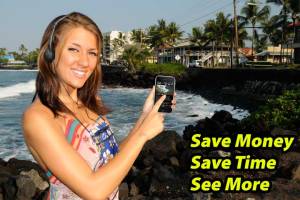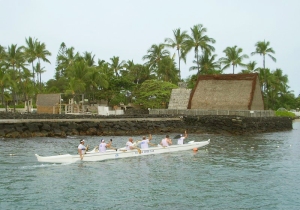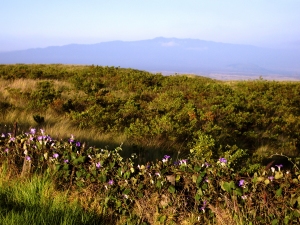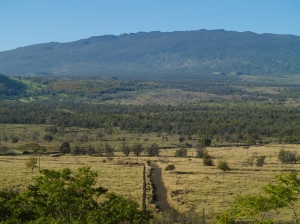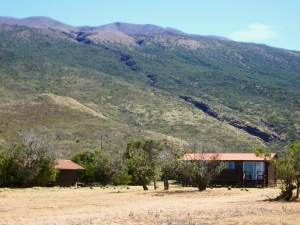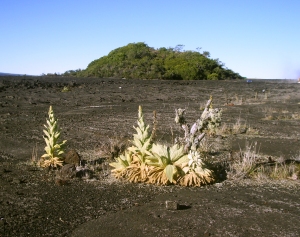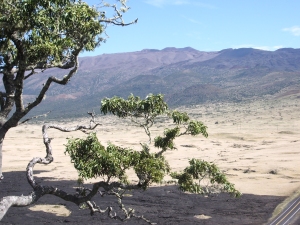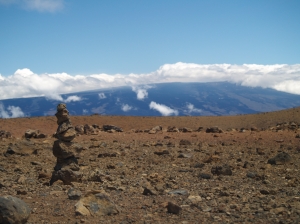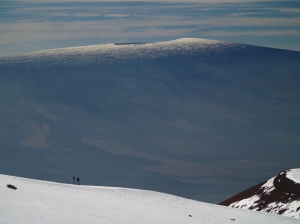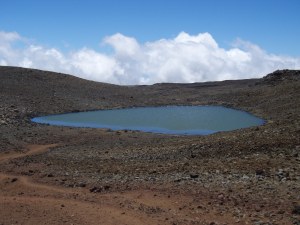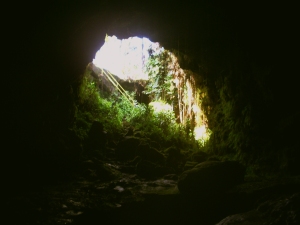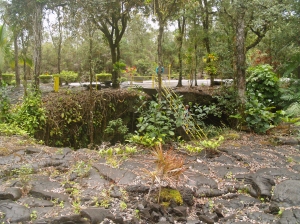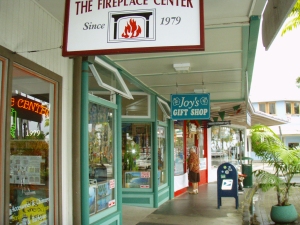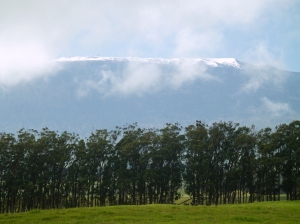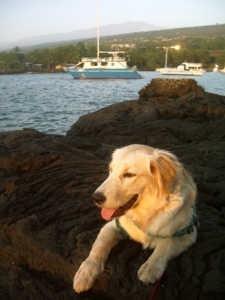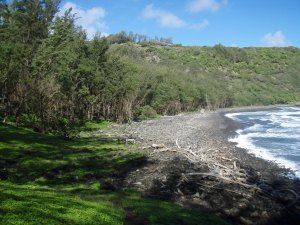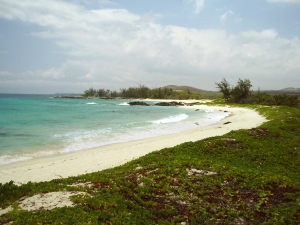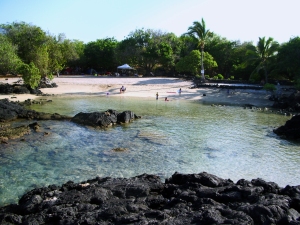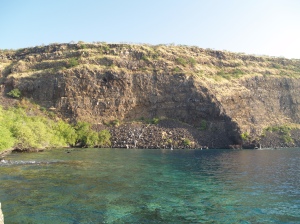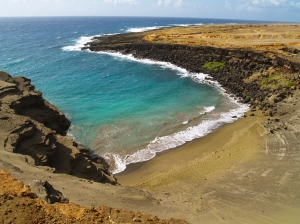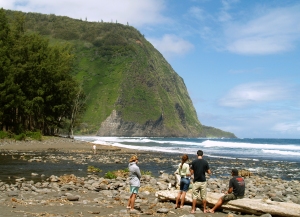Tour Guide Hawaii is excited and proud to announce the launch of their incredible, affordable, fabulous new Hawaii Travel iPhone/iPod Touch App
Navigate to all the most popular visitor destinations, the most interesting attractions, the most romantic and secluded beaches; effortlessly find hikes, snorkel spots, historical and cultural landmarks, shopping and dining. And of course, our new App includes directions to, and rating of, all the public restrooms! Learn all about it, here. In addition to real GPS navigation, this app also allows you to navigate using Google Maps or, if no internet or phone service available, with on-board maps and driving directions! Our App is crammed full of entertaining and informative video presentations about how and where to snorkel, the best trails and beaches, what to pack to bring to Hawaii, cultural orientation and language tips!
Using the Tour Guide Hawaii iPhone/iPod Touch App will save you time, save you money and allow you to see and do more with your Hawaii vacation; this quick video tells you how.
Interested in seeing what kind of information our App contains? In celebration of the release of our new App, we proudly present this list of blogs and web articles on Hawaii Travel, with URLs, of the unique and comprehensive Tour Guide Hawaii content. Enjoy this free information at your leisure, and order your App from iTunes, today!
Tour Guide Hawaii proudly presents the best, the most interesting, the most comprehensive material on Hawaii travel ever gathered in one place!
Best About Planning Your Hawaii Trip
What To Pack And Take To Hawaii: What You Need, What You Want, What You Can Leave Out Of Your Luggage: http://lovingthebigisland.wordpress.com/2009/07/13/what-to-pack-and-take-to-hawaii-what-you-need-what-you-want-what-you-can-leave-out-of-your-luggage/
Getting To Hawaii, Getting Around Hawaii, Getting the Most From Hawaii: http://lovingthebigisland.wordpress.com/2009/06/04/getting-to-and-getting-around-the-big-island-of-hawaii/
Frank's Guide to Pronouncing Hawaiian Words: http://lovingthebigisland.wordpress.com/2009/07/01/franks-guide-to-pronouncing-the-hawaiian-langauge/
Best Beaches on Hawaii
A Quick Guide to The Best Beaches of Hawaii Island: Sun, Surf, Solitude: http://lovingthebigisland.wordpress.com/2009/06/25/the-top-beaches-of-hawaii-island/
The Best Beaches in Hawaii: Part 1, The Main Kohala Coast: http://lovingthebigisland.wordpress.com/2009/08/03/the-best-beaches-in-hawaii-part-1-the-main-kohala-coast/
The Best Beaches in Hawaii: Part 2, The Kona and South Kohala Coasts: http://lovingthebigisland.wordpress.com/2009/08/05/the-best-beaches-in-hawaii-part-2-the-kona-and-south-kohala-coasts/
Best Beaches in Hawaii: Part 3, Unusual, Uncrowded and Untamed Beaches of South Hawaii: http://lovingthebigisland.wordpress.com/2009/08/07/best-beaches-in-hawaii-part-3-unusual-uncrowded-and-untamed-beaches-of-south-hawaii/
Best Beaches in Hawaii: Part 4, Wilderness Beaches of the Big Island: http://lovingthebigisland.wordpress.com/2009/08/09/best-beaches-in-hawaii-part-4-wilderness-beaches-of-the-big-island/
Best Beaches in Hawaii Part 5--Best Beaches for Snorkeling: http://lovingthebigisland.wordpress.com/2009/08/11/best-beaches-in-hawaii-part-5-best-beaches-for-snorkeling/
Best Scenic Drives on Hawaii
My Favorite Scenic Drive: Hawaii's Wild and Scenic Saddle Road!: http://lovingthebigisland.wordpress.com/2009/09/02/my-favorite-scenic-drive-hawaiis-wild-and-scenic-saddle-road/
Big Island Whirlwind Road Trip: I have to see the whole Big Island all in one day!http://lovingthebigisland.wordpress.com/2009/09/15/big-island-whirlwind-road-trip-i-have-to-see-the-whole-big-island-all-in-one-day/
Kona Heritage Corridor Scenic Drive: An Exceptional Day Trip Exploration of Historical, Lovely, Up-Country Kona!:http://lovingthebigisland.wordpress.com/2009/06/14/kona-heritage-corridor-scenic-drive-an-exceptional-day-trip-exploration-of-historical-lovely-up-country-kona/
Best Scenic Drives on Hawaii #1: The Saddle Road...Kona to the Summit of Mauna Kea, Kaumana Cave and Hilo:http://lovingthebigisland.wordpress.com/2009/08/17/best-scenic-drives-on-hawaii-1-the-saddle-road-kona-to-the-summit-of-mauna-kea-kaumana-cave-and-hilo/
Best Scenic Drives on Hawaii #2: North Kona and Kohala, Ancient History, Sumptuous Beaches: http://lovingthebigisland.wordpress.com/2009/08/21/best-scenic-drives-on-hawaii-2-north-kona-and-kohala-ancient-history-sumptuous-beaches/
Best Scenic Drives on Hawaii #3: Kona to Hamakua and Hilo: http://lovingthebigisland.wordpress.com/2009/08/23/best-scenic-drives-on-hawaii-3-kona-to-hamakua-and-hilo/
Best Scenic Drives in Hawaii #4: Kona Coast to South Point and Ka'u http://lovingthebigisland.wordpress.com/2009/08/26/best-scenic-drives-in-hawaii-4-kona-coast-to-south-point-and-kau/
Best Scenic Drives in Hawaii #5: Kailua Kona to Hawaii Volcanoes National Park, Puna and Lava Viewing: http://lovingthebigisland.wordpress.com/2009/08/30/best-scenic-drives-in-hawaii-5-kailua-kona-to-hawaii-volcanoes-national-park-puna-and-lava-viewing/
What Do I Do on the Big Island? Explore Hawaii's Incomparable, Fantastic and Wild South Coast!: http://lovingthebigisland.wordpress.com/2008/12/20/what-do-i-do-on-the-big-island-explore-hawaiis-incomparable-fantastic-and-wild-south-coast/
Road Trip Through Keauhou Historic District, Big Island, Hawaii: http://lovingthebigisland.wordpress.com/2008/07/10/wwwtourguidehawaicom-presents-a-road-trip-through-keauhou-historic-district-big-island-hawaii/
Best About Hiking:
The Best Short Hikes on Hawaii Island: http://lovingthebigisland.wordpress.com/2009/06/29/the-best-short-hikes-on-hawaii-island/
The Adventure and Romance of Hiking To Kilauea Volcano's Active Lava Flows: http://lovingthebigisland.wordpress.com/2008/07/20/tour-guide-hawaii-presents-the-adventure-and-romance-of-hiking-to-kilauea-volcanos-active-lava-flows/
Historic Kailua Kona Town on the Big Island of Hawaii: A Walking Tour: http://lovingthebigisland.wordpress.com/2009/05/03/historic-kailua-kona-town-on-the-big-island-of-hawaii-a-walking-tour/
Hiking and Camping at Hawaii's Last Wilderness Beach: La'amaomao the Wind God and Makalawena Beach: Advice: http://lovingthebigisland.wordpress.com/2009/02/21/hiking-and-camping-at-hawaiis-last-wilderness-beach-laamaomao-the-wind-god-and-makalawena-beach/
Driving and Hiking to the Summit of Mauna Kea, Big Island of Hawaii: http://lovingthebigisland.wordpress.com/2009/07/26/advice-driving-and-hiking-to-the-summit-of-mauna-kea-big-island-of-hawaii/
Hidden Secrets of Hawaii: The Golden Ponds of Ke-awa-iki: http://lovingthebigisland.wordpress.com/2009/04/21/hidden-secrets-of-hawaii-the-golden-ponds-of-ke-awa-iki/
Hiking at Kilauea Volcano on the Big Island of Hawaii: http://lovingthebigisland.wordpress.com/2009/01/07/hiking-at-kilauea-volcano-on-the-big-island-of-hawaii/
Best About Snorkeling
The Best Snorkeling Spots on Hawaii Island: http://lovingthebigisland.wordpress.com/2009/06/27/the-best-snorkeling-spots-on-hawaii-island/
Hawaii Island Snorkeling Tips, Part I: Gear: http://lovingthebigisland.wordpress.com/2009/05/16/hawaii-island-snorkeling-tips-part-i-gear-2/
Hawaii Island Snorkeling Tips, Part II: Technique : http://lovingthebigisland.wordpress.com/2009/05/18/hawaii-island-snorkeling-tips-part-ii-technique-2/
Hawaii Island Snorkeling Tips, Part III: Protecting the Reef and Reef Animals: http://lovingthebigisland.wordpress.com/2009/05/20/hawaii-island-snorkeling-tips-part-iii-reef-etiquette-2/
Hawaii Island Snorkeling Tips, Part IV: Snorkeling Safety: http://lovingthebigisland.wordpress.com/2009/05/26/hawaii-island-snorkeling-tips-part-iv-snorkeling-safety-2/
Hawaii Island Snorkeling Tips, Part V: Best Snorkeling Beaches of the Big Island: http://lovingthebigisland.wordpress.com/2009/05/28/hawaii-island-snorkeling-tips-part-v-best-snorkeling-beaches-of-the-big-island-2/
Hawaii Island Snorkeling Tips Part VI: Wilderness Beaches of the Big Island!: http://lovingthebigisland.wordpress.com/2009/05/30/hawaii-island-snorkeling-tips-part-vi-wilderness-beaches-of-the-big-islanda/
Frank's Big Island Travel Hints
Frank's Big Island Travel Hints #1: North Kona and Kohala, Ancient History, Sumptuous Beaches: http://lovingthebigisland.wordpress.com/2009/02/28/kona-day-trips-1-north-kona-and-kohala-ancient-history-sumptuous-beaches/
Frank's Big Island Travel Hints #2: Kona to Hamakua and Hilo: http://lovingthebigisland.wordpress.com/2009/03/02/big-island-day-trips-2-kona-to-hamakua-and-hilo/
Frank's Big Island Travel Hints # 3: Kona Coast to South Point and Ka'u: http://lovingthebigisland.wordpress.com/2009/03/04/big-island-day-trips-3-kona-coast-to-south-point-and-kau/
Frank's Big Island Travel Hints #4: Kailua Kona to Hawaii Volcanoes National Park, Puna and Lava Viewing: http://lovingthebigisland.wordpress.com/2009/03/06/big-island-day-trips-4-kailua-kona-to-hawaii-volcanoes-national-park-puna-and-lava-viewing/
Frank's Big Island Travel Hints #5: A Trip From Kona Across the Top of Hawaii; Mauna Kea Summit, Kaumana Cave and Hilo via the Saddle Road: http://lovingthebigisland.wordpress.com/2009/03/08/big-island-day-trips-5-a-trip-from-kona-across-the-top-of-hawaii-mauna-kea-summit-kaumana-cave-and-hilo-via-the-saddle-road/
Frank's Big Island Travel Hints #6: Waimea and the Hamakua Coast: http://lovingthebigisland.wordpress.com/2009/03/13/franks-big-island-travel-hints-6-waimea-and-the-hamakua-coast-3/
Frank's Big Island Travel Hints # 7: Around Hilo: http://lovingthebigisland.wordpress.com/2009/03/26/franks-big-island-travel-hints-7-around-hilo-3/
Frank's Big Island Travel Hints #8: Mysterious Puna!: http://lovingthebigisland.wordpress.com/2009/04/03/franks-travel-hints-8-mysterious-puna-3/
Frank's Big Island Travel Hints #9: Made for Adventure: The Jungles, Volcanoes, Hot Springs and Tidepools of Puna!: http://lovingthebigisland.wordpress.com/2008/10/26/franks-hawaii-travel-tips-9-made-for-adventure-the-jungles-volcanoes-hot-springs-and-tidepools-of-puna-2/
Frank's Big Island Travel Hints #10: Hawaii Volcanoes National Park: http://lovingthebigisland.wordpress.com/2009/04/19/franks-travel-tips-10-hawaii-volcanoes-national-park/
Frank's Travel Hints # 11: Exploring Deeper Into Hawaii Volcanoes National Park, Big Island, Hawaii: http://lovingthebigisland.wordpress.com/2009/04/27/franks-travel-hints-11-exploring-deeper-into-hawaii-vocanoes-national-park-big-island-hawaii-2/
Frank's Big Island Travel Hints #12: More fun in Hawaii Volcanoes National Park, Big Island, Hawaii: http://lovingthebigisland.wordpress.com/2009/06/12/franks-big-island-travel-hints-12-more-fun-in-hawaii-volcanoes-national-park-big-island-hawaii-3/
Frank's Big Island Travel Hints #13: Hawaii Volcanoes National Park: Chain of Craters Road: http://lovingthebigisland.wordpress.com/2009/06/16/franks-big-island-travel-hints-13-4/
Best Interesting Stories and General Reading about Hawaii
The Beautiful, Enigmatic and Cryptic Petroglyphs of Hawaii Island: http://lovingthebigisland.wordpress.com/2009/04/23/the-beautiful-enigmatic-and-cryptic-petroglyphs-of-hawaii-island/
Hawaii's Amazing Lava Fossils: http://lovingthebigisland.wordpress.com/2009/08/24/hawaiis-amazing-lava-fossils/
The Sugar Industry in Hawaii: Kona Sugar Company and West Hawai’i Railway Company: http://lovingthebigisland.wordpress.com/2009/04/25/the-sugar-industry-in-hawaii-kona-sugar-company-and-west-hawai%E2%80%99i-railway-company/
Captain Cook's Legacy: Exploring the History and Waters of Kealakekua Bay: http://lovingthebigisland.wordpress.com/2009/04/07/949/
Kilauea's Eruption Just Keeps Getting More Fantastic!: http://lovingthebigisland.wordpress.com/2008/07/31/wwwtourguidehawaiicom-presents-new-video-of-kilauea-volcano-erupting/
Kalapana, Hawaii: From the Fires of Hades to the Eden of Rebirth: http://lovingthebigisland.wordpress.com/2009/01/17/kalapana-hawaii-from-the-fires-of-hades-to-the-eden-of-rebirth/
Pu'u Loa Petroglyph Field, Hawaii Volcanoes National Park: http://lovingthebigisland.wordpress.com/2009/03/17/823/
Hawaiian Green Sea Turtles: Honu of the Big Island: http://lovingthebigisland.wordpress.com/2009/01/09/hawaiian-green-sea-turtles-honu-of-the-big-island-2/
A Brief History of Ranching in Hawaii: http://lovingthebigisland.wordpress.com/2009/05/24/rodeo-to-rock-and-roll-a-brief-history-of-ranching-in-hawaii/
Rising From The Past: The Rebirth of Hapaiali'i Heiau, a Hawaiian Temple for Honoring Royalty: http://lovingthebigisland.wordpress.com/2009/05/01/1118/
The Hawaiian Snow Goddess Poliahu and the Summit of Mauna Kea...: http://lovingthebigisland.wordpress.com/2009/02/05/the-hawaiian-snow-goddess-poliahu-and-the-summit-of-mauna-kea/
Mo'okini Heiau: Warrior Kings and Human Sacrifice on Hawai'i: http://lovingthebigisland.wordpress.com/2009/01/03/mookini-heiau-warrior-kings-and-human-sacrifice-on-hawaii-2/
The Call of Aloha...:http://lovingthebigisland.wordpress.com/2009/08/13/the-call-of-aloha/
Why I love Hawaii...: http://lovingthebigisland.wordpress.com/2009/01/13/why-i-love-hawaii/
Conjuring Visions of Paradise: http://lovingthebigisland.wordpress.com/2009/02/19/conjuring-visions-of-paradise/
Volcano Art Center—A Kipuka of Creativity on the Rim of Madam Pele's Home: http://lovingthebigisland.wordpress.com/2009/06/01/volcano-art-center-hawaii-volcanoes-national-park/
Jagger Museum, Hawaii Volcanoes National Park: http://lovingthebigisland.wordpress.com/2009/04/01/jagger-museum-hawaii-volcanoes-national-rark/
